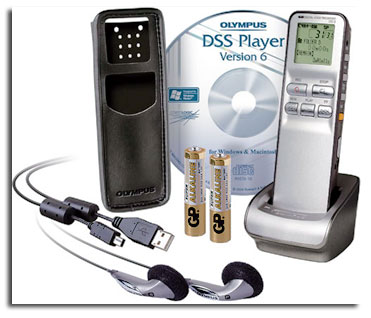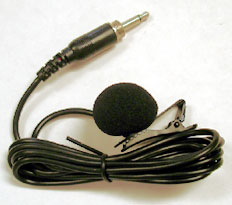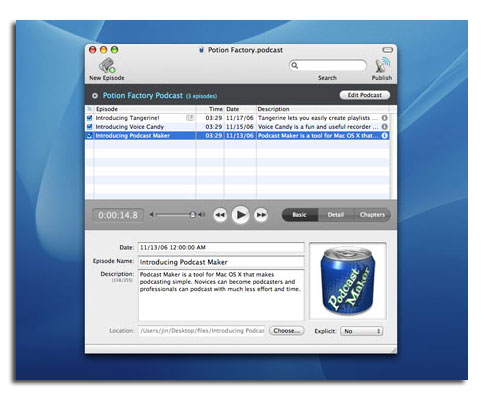The Making of the Urban Dharma Podcast -
Kusala Bhikshu
This
is a short 'how to' on the making of the Urban
Dharma Podcast...
First off, I needed an Audio Recorder, but which one...
I chose the Olympus
DS2 after going to Amazon.com and
doing a
search
for
audio recorders. I then walked to a local radio shack
and bought two lapel
mic's and splitter for my talks and interviews.
Right
from the start, I wanted to record live presentations...
There is a certain energy a speaker and audience create,
I wanted to capture that. The DS2 is small and fits nicely
in a pocket... I set the sound at 'High Quality
Mono', which gives me a little over 4 hours of recording
time, and the lapel mic allows me to roam around and
interact with the audience.
I
use my PC Desktop and the 'DSS Player' software for editing
and archiving files (there
is a small charge to upgrade the 'DSS Player' software).
I use the DS2 to record the introduction and ending,
which I then join to the original talk using the 'DSS
Player'
software.
The
next step is to download the completed .WMA file into
a 'Flash Drive' so I can transfer it to my 'Mac Mini.'
The software
on
my
'Mac Mini' enables
me to create and publish the podcast to the internet.
On
the Mac Mini I convert the .WMA file into an .MP3 file
using a shareware ('EasyWMA')...
Now it's time to open 'Podcast Maker'... It takes the converted
MP3 file, tags it and creates
the finished product... I find 'Podcast Maker' easy and
intuitive use. I publish the completed podcast into my
local 'Dreamweaver' podcast
folder
and FTP it to the internet. I use 'Bluehost'
for web hosting... They allow me 2000 gigs of bandwidth
transfer a month... Podcasts can really eat
up
your
bandwidth... Urban Dharma as of January 2007,
uses between 100 and 200 gigs of bandwidth a month, so
plenty of room for growth.
Well, that's
it...
There
are many ways to do a podcast, this is the one I came up
with. |

Olympus
DS-2 / Digital Audio Recorder
Amazon.com Review - The advantages of digital voice recorders
are numerous: superior sound, long recording times, and the
convenience
of built-in
memory (much handier than hauling around several microcassettes).
Enter the high-performance Olympus DS-2, which makes professional
interviewing and dictation easy and efficient. With 64 MB of
internal memory delivering up to 22 hours of total recording
time in Long Play mode, the device is great for archiving long
meetings or lectures, or for researching huge projects that
require dozens of interviews. Users also have the choice of
recording at several other speeds, including extreme high-quality
modes that offer far less recording time (as little as one
hour and five minutes) but much better audio resolution. The
latter modes are more suitable for recording soft voices or
when taking down complex song ideas--a process that's further
assisted by the built-in stereo microphone designed to pick
up all sides of a conversation with equal clarity.
The DS-2 is a breeze to use thanks to its straightforward front
panel, from which users can quickly access or move files (the
recorder comes with five folders, each capable of holding 199
files), set the alarm, or change the recording mode. Multitasking
users will also delight in the voice activation function, which
enables hands-free recording--a must when you're busy taking
notes. Voice activation also saves battery life by powering off
when no sound is detected. And when you just don't have time
to attend to the details on the spot, you can set the DS-2 to
record automatically over a fixed span. Simply enter the start
and end times and the timer function is ready to go.
And though the DS-2 is primarily a recorder, the package comes
with DSS Player software for editing and archiving files. The
software offers a nice way to delete long silences, eliminate
small talk, or combine two small but related passages into one
large statement. Users can then transfer the files (they record
in high-compression DSS and WMA formats) to a PC or Mac via the
included USB docking station and cable. Once transferred, you
can save them in perpetuity while freeing up the internal memory
to record other interviews or meetings.
Additional features include a backlit LCD screen that shows
the date, time, battery life, and more; 3.5 mm headphone and
microphone jacks for added flexibility; and several basic and
advanced playback options, including slow, fast, skip, and repeat.
And best of all, the variety of functions come packed in a chassis
that fits conveniently in your hand or pocket--quite unlike the
bulky tape recorders of yesteryear. The DS-2, which also comes
with a pair of earphones and a carrying case, runs for 18 hours
on a single pair of AAA batteries (included) and carries a one-year
warranty.
What's
in the Box - DS-2 voice recorder, USB docking
station, USB cable, stereo earphones, carrying case, DSS Player
software CD, two AAA batteries, user's
manual.

Radio Shack / Lapel Mic

Podcast
Maker / Potion
Factory
Podcast Maker is a tool for Mac OS X that makes
podcasting simple. Novices can become podcasters and professionals
can podcast with much less effort and time.
Content
Create your content the way you usually do: with GarageBand, Audio Hijack Pro,
QuickTime Pro, etc. Then drag in your content into Podcast Maker. You can
drag files directly in from iTunes and iPhoto. You can even import files
that are already out on the web. As long as it's a podcast friendly format
(mp3, m4a, mov, mp4, m4v, pdf) Podcast Maker will podcast it.
RSS
Podcast Maker creates RSS 2.0 and iTunes compatible RSS XML files for your
podcast so that you don't have to fuss over the details of getting it right
and fully standards compliant.
Enhanced Podcast
Add chapters with images and links to your podcast. With enhanced
podcasts your audience will be able to see what you are talking
about and visit the websites that you are talking about with
a click of the mouse. This is a great way to podcast your lecture
or presentation. Podcast Maker is considered by many to be
the best enhanced podcast creator. You can't even do this stuff
on Windows.
Preview
See what your podcast will look like at the iTunes Music Store.
Preview your enhanced podcast so that there are no surprises
once your podcast goes live.
Publish
There are a multitude of publishing options: .Mac, FTP, SFTP, and local folder.
Choose .Mac if you already have a .Mac account and want a pain free, zero
configuration, one-click publishing. If you already have web hosting, use
FTP or SFTP to transfer your podcast. Podcast Maker uploads only new and
changed episodes of your podcast.
Metadata
During the publishing process, Podcast Maker embeds your cover
art image and other information into the mp3 and m4a file so
that they are visible in both iPods and iTunes. Little touches
like this will make your podcast shine.
Rescue Your Podcast
You already have a podcast. But, you are finding out that podcasting takes
too much time and effort. Import your feed into Podcast Maker. Let Podcast
Maker save your podcast.